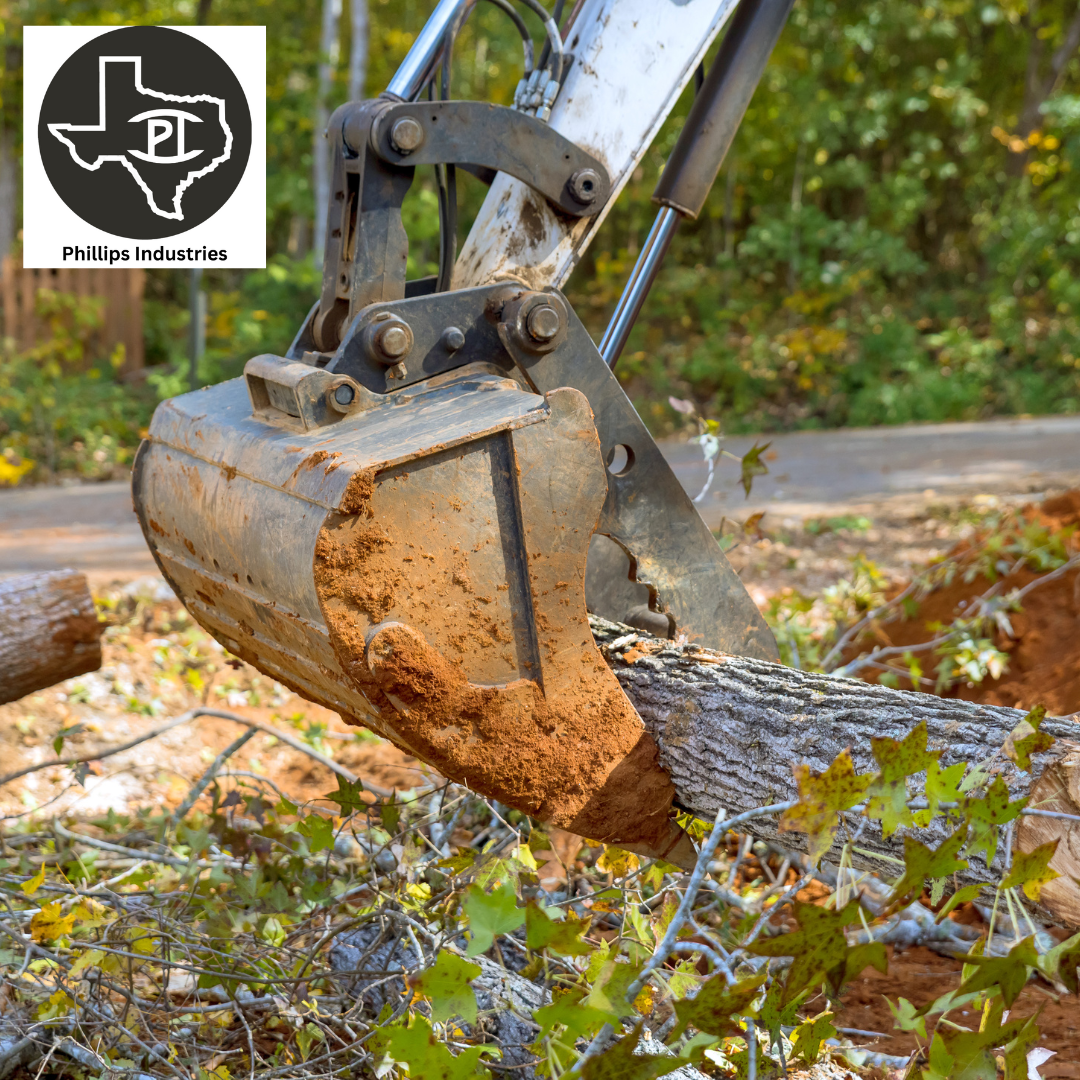Phillips Industries is a leading company in the field of land improvement. Their mission is to enhance the quality and productivity of land through sustainable practices and innovative solutions. With a focus on environmental stewardship and community development, Phillips Industries is dedicated to making a positive impact on the land and the people who depend on it.
Key Takeaways
- Phillips Industries is committed to improving the land through sustainable practices.
- Improvement to the land refers to actions taken to enhance the quality and productivity of the land.
- Improving the land is important for environmental sustainability and economic growth.
- Phillips Industries’ commitment to land improvement includes soil conservation, water management, sustainable agriculture, reforestation, and wildlife habitat restoration.
- Phillips Industries’ impact on land improvement is significant and contributes to a healthier planet.
Definition of Improvement to the Land
Improvement to the land refers to any action or practice that enhances the quality, productivity, and sustainability of the land. It involves implementing measures to conserve soil, manage water resources, promote sustainable agriculture, restore wildlife habitats, and reforest areas that have been deforested. Land improvement can take many forms, from small-scale initiatives such as planting trees or implementing erosion control measures, to large-scale projects like watershed management or reforestation efforts.
Examples of land improvement include implementing erosion control measures such as terracing or contour plowing to prevent soil erosion, using drip irrigation systems to conserve water in agriculture, adopting sustainable farming practices such as crop rotation and cover cropping, restoring degraded wildlife habitats through habitat restoration projects, and planting trees to combat deforestation and promote biodiversity.
Importance of Improving the Land
Improving the land is crucial for several reasons. Firstly, it helps protect and preserve natural resources such as soil, water, and biodiversity. By implementing measures to conserve soil and manage water resources effectively, land improvement practices help prevent erosion, reduce water pollution, and maintain healthy ecosystems. This is essential for maintaining the long-term productivity and sustainability of the land.
Secondly, land improvement has significant economic benefits. By enhancing soil fertility and water availability, it increases agricultural productivity and improves crop yields. This not only benefits farmers but also contributes to food security and economic growth at both local and national levels. Additionally, land improvement practices such as reforestation can create job opportunities in industries such as forestry and eco-tourism.
Lastly, land improvement has social benefits. By promoting sustainable agriculture and protecting natural habitats, it helps ensure the well-being and livelihoods of communities that depend on the land for their food, water, and income. It also contributes to the overall health and quality of life of individuals by providing access to clean air, water, and recreational spaces.
Phillips Industries’ Commitment to Land Improvement
Phillips Industries is deeply committed to land improvement and has made it a core part of their business philosophy. They believe that responsible land management is not only essential for the environment but also for the long-term success and sustainability of their operations.
To fulfill this commitment, Phillips Industries has implemented various initiatives and programs aimed at improving the land. They have partnered with local communities, government agencies, and non-profit organizations to develop and implement sustainable land management practices. These initiatives include soil conservation programs, water management projects, sustainable agriculture practices, reforestation efforts, and wildlife habitat restoration projects.
Example of Land Improvement: Soil Conservation
Soil conservation is a critical aspect of land improvement. It involves implementing practices that prevent soil erosion, improve soil fertility, and promote sustainable land use. Soil erosion is a major problem worldwide, leading to the loss of fertile topsoil, reduced agricultural productivity, and increased water pollution.
Phillips Industries recognizes the importance of soil conservation and has implemented several measures to address this issue. They have adopted conservation tillage practices such as no-till or reduced tillage, which help minimize soil disturbance and reduce erosion. They also promote the use of cover crops and crop rotation to improve soil health and prevent erosion.
Furthermore, Phillips Industries has invested in research and development to develop innovative solutions for soil conservation. They have developed erosion control products such as erosion control blankets and sediment control devices that help prevent soil erosion in construction sites and other areas prone to erosion.
Example of Land Improvement: Water Management

Water management is another crucial aspect of land improvement. It involves implementing practices and technologies to conserve water resources, prevent water pollution, and ensure sustainable water use. With increasing water scarcity and the growing demand for water, effective water management is essential for the long-term sustainability of land and agriculture.
Phillips Industries has taken significant steps to improve water management in their operations. They have implemented drip irrigation systems in their agricultural fields, which deliver water directly to the roots of plants, minimizing water loss through evaporation and runoff. This not only conserves water but also improves crop yields and reduces the need for chemical fertilizers.
Additionally, Phillips Industries has implemented rainwater harvesting systems to capture and store rainwater for irrigation purposes. This helps reduce reliance on groundwater sources and ensures a sustainable water supply for their agricultural activities.
Example of Land Improvement: Sustainable Agriculture
Sustainable agriculture is a key component of land improvement. It involves adopting practices that promote long-term agricultural productivity while minimizing negative environmental impacts. Sustainable agriculture practices include organic farming, agroforestry, integrated pest management, and precision agriculture.
Phillips Industries is committed to sustainable agriculture and has implemented various practices to promote it. They have transitioned to organic farming methods, which eliminate the use of synthetic fertilizers and pesticides, reduce soil erosion, and promote biodiversity. They also practice agroforestry by planting trees alongside their crops, which helps improve soil fertility, conserve water, and provide habitat for wildlife.
Furthermore, Phillips Industries has embraced precision agriculture techniques such as GPS-guided machinery and remote sensing technologies. These technologies help optimize the use of inputs such as fertilizers and irrigation water, reducing waste and improving efficiency.
Example of Land Improvement: Reforestation
Reforestation is a critical land improvement practice that involves planting trees in areas that have been deforested or degraded. Trees play a crucial role in maintaining healthy ecosystems by providing habitat for wildlife, preventing soil erosion, conserving water, and sequestering carbon dioxide.
Phillips Industries recognizes the importance of reforestation and has implemented several reforestation projects. They have partnered with local communities and non-profit organizations to plant trees in deforested areas, creating new forests and restoring degraded ecosystems. These reforestation efforts not only help combat climate change by sequestering carbon dioxide but also provide habitat for wildlife and promote biodiversity.
Example of Land Improvement: Wildlife Habitat Restoration
Wildlife habitat restoration is another important aspect of land improvement. It involves restoring degraded habitats to their natural state, providing suitable conditions for native plants and animals to thrive. This is crucial for maintaining biodiversity, preserving ecosystems, and ensuring the long-term survival of wildlife species.
Phillips Industries has undertaken several wildlife habitat restoration projects in collaboration with conservation organizations. They have restored wetlands, created wildlife corridors, and implemented measures to protect critical habitats for endangered species. These efforts have helped preserve biodiversity, enhance ecosystem services, and promote the well-being of local communities.
Phillips Industries’ Impact on Land Improvement
In conclusion, Phillips Industries has made a significant impact on land improvement through their commitment to sustainable practices and innovative solutions. Their initiatives in soil conservation, water management, sustainable agriculture, reforestation, and wildlife habitat restoration have helped enhance the quality and productivity of land while promoting environmental stewardship and community development.
By implementing these practices, Phillips Industries has not only improved the health and sustainability of their own operations but also contributed to the well-being of the environment and society as a whole. Their efforts have helped conserve soil, protect water resources, promote biodiversity, mitigate climate change, and support local communities.
It is essential for other companies and individuals to prioritize land improvement efforts to ensure the long-term sustainability of our planet. By following the example set by Phillips Industries and implementing sustainable land management practices, we can make a positive impact on the environment and create a better future for generations to come.
If you’re interested in learning more about Phillips Industries and their expertise in land improvement, you should definitely check out their testimonials page. It features firsthand accounts from satisfied clients who have experienced the company’s exceptional services. From building pads to site development, Phillips Industries has proven to be a reliable and efficient contractor in Texas. To explore their testimonials and see how they have transformed various landscapes, visit Testimonials.
FAQs

What is meant by improvement to the land?
Improvement to the land refers to any activity or process that enhances the value, productivity, or usefulness of a piece of land. It can include activities such as clearing, grading, drainage, irrigation, planting, and construction.
What are some examples of improvement to the land?
Examples of improvement to the land include building structures such as houses, barns, and sheds, installing irrigation systems, planting crops or trees, and constructing roads or driveways.
Why is improvement to the land important?
Improvement to the land is important because it can increase the value of the property, make it more productive, and enhance its usefulness. It can also provide economic benefits by creating jobs and generating income.
What are some environmental considerations when making improvements to the land?
Environmental considerations when making improvements to the land include preserving natural habitats, minimizing erosion and sedimentation, and protecting water quality. It is important to follow local regulations and obtain necessary permits before making any changes to the land.
What are some legal considerations when making improvements to the land?
Legal considerations when making improvements to the land include obtaining necessary permits and approvals, complying with zoning and land use regulations, and ensuring that any structures or improvements are built to code. It is important to consult with local authorities and legal professionals before making any changes to the land.
Page Design by: Website Creators Near Me






